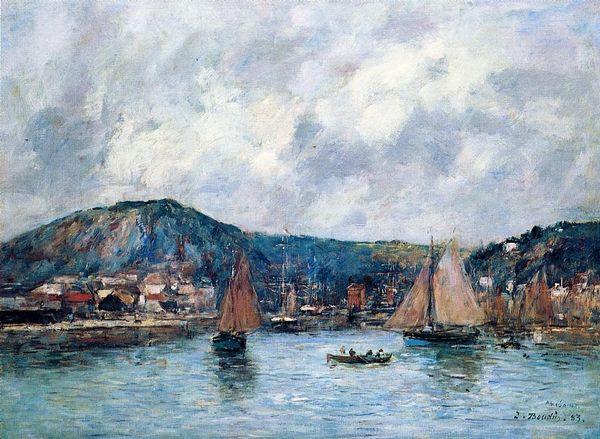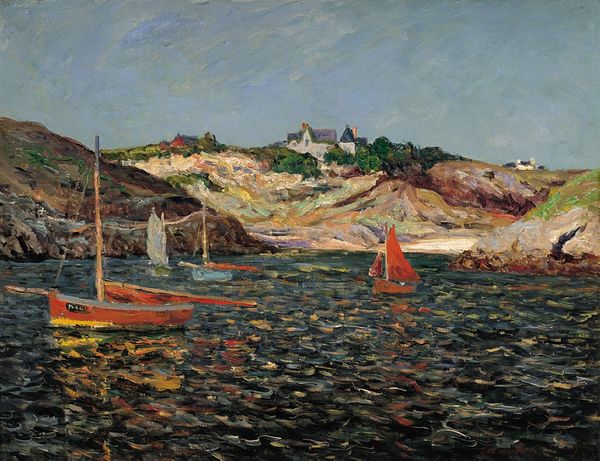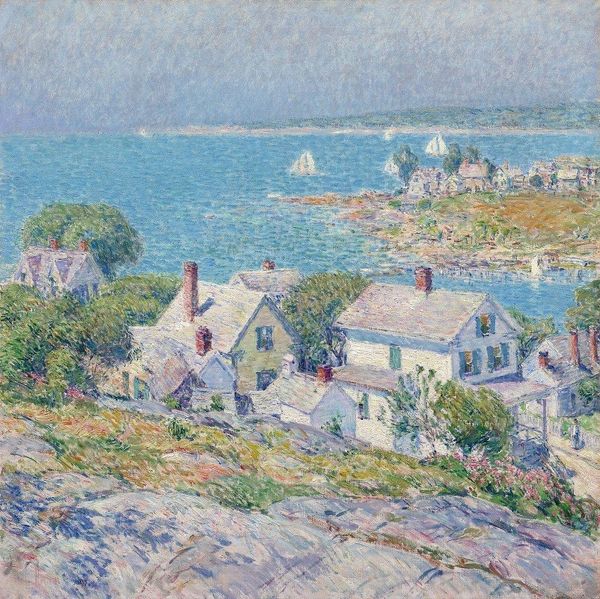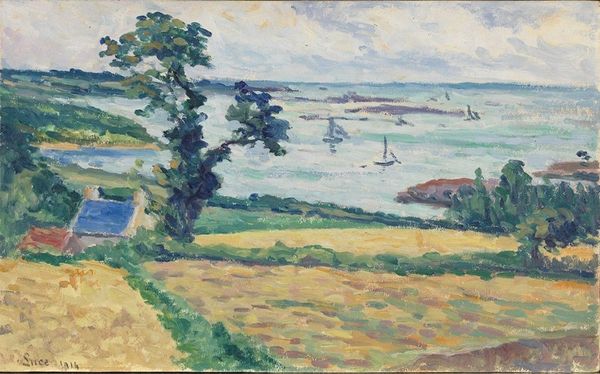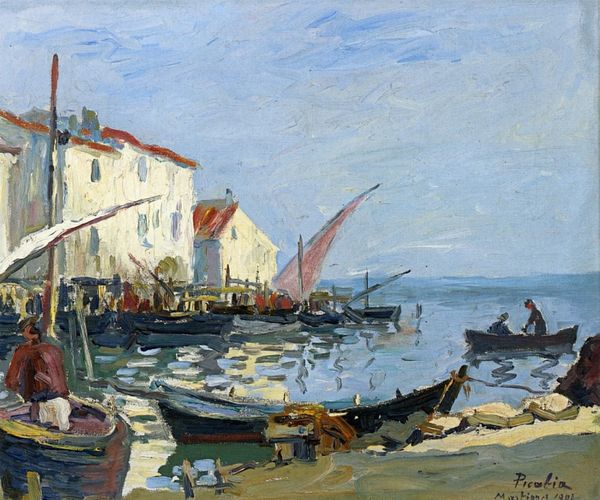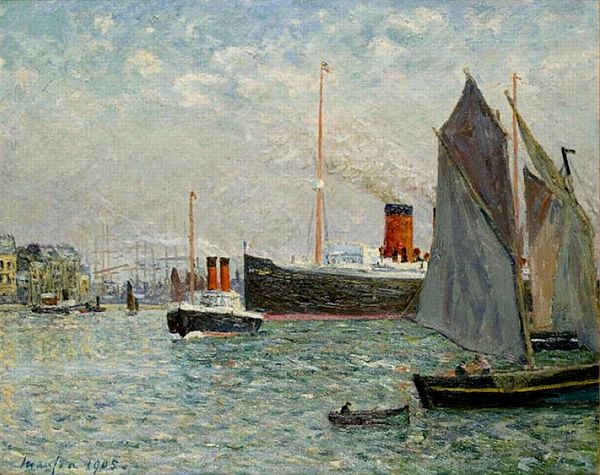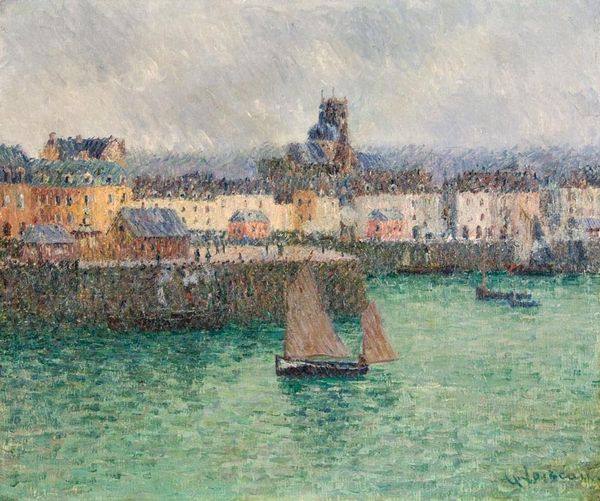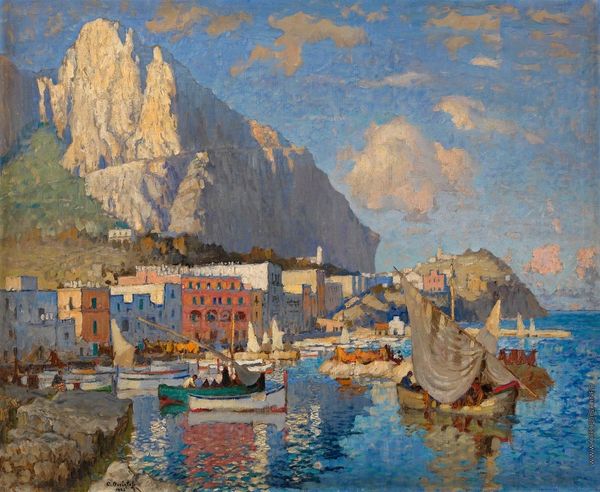
Copyright: Public domain
Curator: "Douarnenez in Sunshine," painted in 1897 by Maxime Maufra, captures the port of Douarnenez bathed in a warm light. The artist, working en plein air, has created a dynamic interplay of land, sea, and sky with expressive brushstrokes. Editor: It's surprisingly serene, almost muted. The bold, choppy strokes still manage to create a sense of calm. There is something about those rusty orange sails, aren't they like figures against that misty background? Curator: Maufra was dedicated to capturing fleeting moments, and it is about how this was physically executed. Look closely—the visible brushwork, the layering of the oil paint. Notice the materiality itself and consider that this painting was done outside. How the materials would respond to the elements and the environment the artist was in while creating. The act of creating plein air becomes inherently physical. Editor: Absolutely, and it moves beyond the visual. I find it relevant how harbor towns were crucial for maritime trade and cultural exchange and how these paintings contributed to solidifying the notion of the romantic, picturesque coastal region of France. Curator: Yes! And Douarnenez itself, by the late 19th century, was a center for sardine fishing, employing mostly women. The socio-economic context shaped the community and the landscape that Maufra encountered, directly affecting his subjects. Editor: It also seems poignant to consider the gendered aspect of labor within fishing communities—the visibility of male fishermen in art often overshadowing the contributions of women working in fish processing and related industries on land. Those buildings lining the harbors could be places where those women work. This painting offers us an opportunity to reflect on those unspoken narratives. Curator: Exactly! Thinking of painting as a record of lived labor expands our understanding of Impressionism. It’s not only about sunshine, but about the production of a certain lifestyle that has costs. It is important to note that this approach offers alternative ways to think about and experience what art is, versus only admiring its appearance or symbolic context. Editor: Indeed, exploring the multiple layers of "Douarnenez in Sunshine" opens a discussion that encompasses aesthetics, social dynamics, and the hidden narratives of coastal life in France at the end of the 19th century. Curator: Precisely, engaging with these perspectives allows us to reassess the processes behind the artistic value we so greatly cherish and sometimes take for granted.
Comments
No comments
Be the first to comment and join the conversation on the ultimate creative platform.


